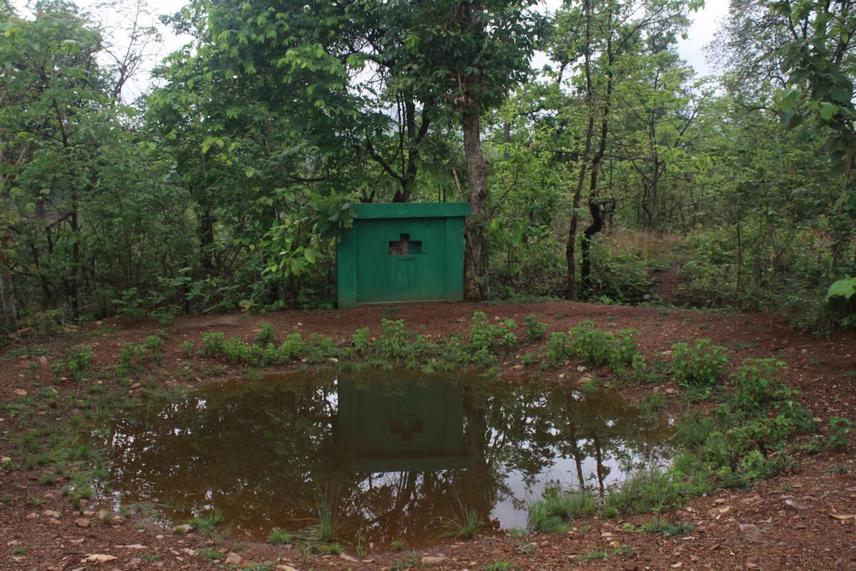Kiran Purandare
Waterholes are crucial for wildlife in dry ecosystems. Both people and wildlife depend on water holes.
The Forest of Nagzira
Nagzira Wildlife Sanctuary (NWS) lies in the Vidarbha region of central India encompassing an area of 150 sq km. The sanctuary is home for charismatic species like Tigers and Leopards. The rich dry deciduous forests of Nagzira are inhabited by the Guar (Indian Bison), Sloth Bears, Sambar deer, Four-horned Antelopes, Nilgai, Chitals, Barking deer, Civet cats and spotted Hyenas. The sanctuary has 174 species of birds, 34 species of mammals, 36 species of reptiles, 4 species of amphibians and 49 species of butterflies. The NWS is an Important Bird Area (IBA) and a site of global conservation significance.

The sanctuary is surrounded by 40 villages which are mostly inhabited by Gond tribal. For long, the Gonds lived in peace with the wildlife until the waterholes in the sanctuary started drying up leaving little choice for the wild animals other than venturing out of the wild in search of water.
Waterholes
At NWS there are more than 40 waterholes, half of which have gone dry due to mismanagement, erosion, changing climatic patterns and erratic rainfall. Most water holes are outside the boundaries of the PA (21 identified) thus forcing wildlife to venture out of the PA to seek water. Consequently, wildlife and people aggregate to few remaining water holes, intensifying conflict, poaching, species competition and increased predation.
Leadership of Kiran Purandare and AERF
Kiran Purandare is a well known wildlife activist from Maharashtra. He is known for his books like ‘Sakha Nagzira’ which took shape during his one-year long stay in the protected area in 2001. His creative techniques such as stage shows and tours for amassing support for conservation are well appreciated by locals, students and nature lovers. During his year long stay in the sanctuary, he had the first hand experience of severe water crises in the protected area.
Along with Kiran Purandare, a team of experts from Applied Environmental Research Foundation (AERF) an NGO involved in community based conservation for 14 years will be assessing the situation and reviving 6 waterholes within the PA with community support to resolve the water crisis both for people and wildlife. With support from RSGF, the AERF team along with the leadership of Kiran Purandare will be mapping all the waterholes within the PA, generate awareness among the tribal groups. Local youth will be trained for wildlife monitoring and restoration of waterholes.
This project which is based on active participation of the local tribes to protect the wildlife, will serve as a model to enhance coexistence of humans and wildlife in and around protected areas.